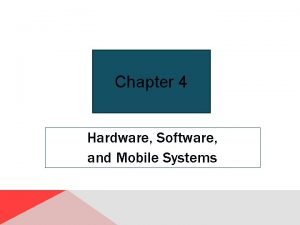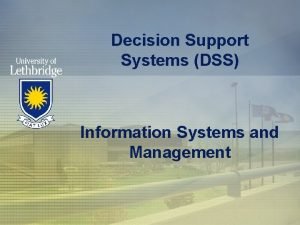Dutch Grid Computing Grid computing is increasingly perceived

- Slides: 1

Dutch. Grid Computing Grid computing is increasingly perceived as the main enabling technology for facilitating multi-institutional and multi-disciplinary collaborations. By sharing unique resources amongst organizations and by providing uniform and ubiquitous access to these facilities to both scientists and industrial endusers, a new generation of challenges can be addressed. WCW Amsterdam ASTRON, JIVE NIKHEF SARA Uv. A AMOLF CWI As clusters of commodity compute systems become more widespread and high-speed networks extend to an ever larger part of the community, Grid middleware and grid portal services are deployed at an increasing number of sites in the Netherlands. Amsterdam Telin Leiden Delft KNMI Utrecht Nijmegen WCW Building Virtual Organizations VU Dutch. Grid site map 20021104 David Groep, NIKHEF Dutch. Grid Platform The real and specific problem underlying Grid technology – well described by Ian Foster and Carl Kesselman – is coordinated resource sharing and problem solving in dynamic, multi-institutional virtual organizations. This sharing involves direct access to computers, software, data, and other on-line resources, as required by a range of collaborative strategies in science, industry and engineering. This sharing is necessarily highly controlled, operating security over the wide-area Internet, with resource operators and users negotiating detailed contracts on what is to be shared, who can use their resources and on conditions of use. Dutch. Grid is the platform for large-scale distributed computing in the Netherlands. Open to all institutions for research and test-bed activities, the goal of Dutch. Grid is to coordinate the various deployment efforts and to offer a forum for the exchange of experiences on Grid technologies. Dutch. Grid Platform collaborators meet regularly, usually at get-togethers organized by of one of the existing Grid projects in the Netherlands: Data. Grid, ASCI/DAS-2 and ICES/KIS Virtual Lab. Besides, the platform provides limited hands-on support for organizations seeking to use Grid for their application. This support is provided through collaborations with one of the participating projects. If you (or your organization) is actively considering to use and deploy Grid services, you are cordially invited to join the Dutch. Grid Platform. See http: //www. dutchgrid. nl/ Such a set of individuals and institutions forms the Virtual Organization. Some Resources Grid Protocol Architecture NIKHEF Applications Condor-G Application Toolkits DUROC MPICH-G 2 ASCI (Uv. A, Vrije Universiteit, TU Delft, Univ. Leiden, Univ. Utrecht) DAS-2 distributed cluster computer 200 dual-processor IBM netfinities Cactus SARA Information Services Grid Services GSI Grid. FTP Data. Grid Application Test Bed: 70 dual-processor Pentiums 2 Terabyte caching disk store, NCFGrid Fabric Research Cluster: 66 -node dual-processor AMD Athlon GRAM SGI Origin 3800 “Teras” (1024 -node supercomputer) 200 Terabyte tape robot; NCFGrid production cluster: 32 -nodes Other partners: NWO/NCF, KNMI, ASTRON, JIVE, ESA/ESTEC, Dutch. Space, FOM AMOLF Condor MPI PBS Grid Fabric Solaris Routers Linux The Grid protocols define the fundamental way by which applications can `talk’ to the resources. Taking key concepts from the Internet architecture, a small number of resource and connectivity protocols allow different applications to access a diverse range of resource types in the Fabric. http: //www. dutchgrid. nl/ Key prototype applications LHC: Petabytes of data Earth Observation: Ozone ENVISAT • 3500 MEuro programme cost • 10 instruments on board • 200 Mbps data rate to ground • 400 Tbytes data archived/year • ~100 `standard’ products • 10+ dedicated facilities in Europe http: //www. esa. int/ • ~700 approved science user projects Biomedicine and bio-informatics

